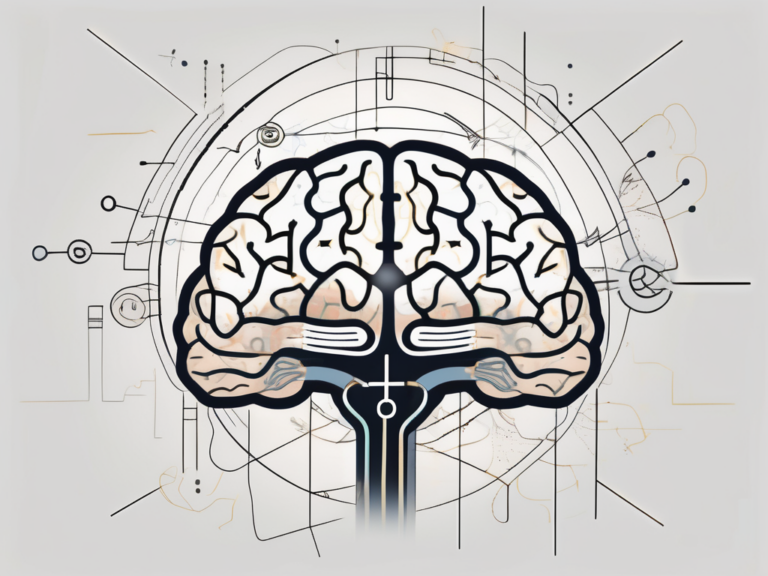Unlocking the Secret Power of the Auricular Nerve
In recent years, the auricular nerve has emerged as a promising target for various therapeutic interventions. This often overlooked nerve, located in the external ear, is believed to have a multitude of functions and potential benefits that have yet to be fully explored and understood. From pain management to non-pain conditions, the auricular nerve holds the key to unlocking a whole new world of possibilities in healthcare.
Understanding the Auricular Nerve
The auricular nerve, also known as the great auricular nerve, is a branch of the cervical plexus that originates from the second and third cervical spinal nerves. It travels along the posterior border of the sternocleidomastoid muscle and then divides into a superficial and deep branch. The superficial branch extends towards the external ear, while the deep branch continues deeper into the neck.
The anatomy of the auricular nerve is complex, with numerous branches and connections throughout the ear region. These connections make it a powerful communication pathway between the brain and various parts of the body, contributing to its potential therapeutic role.
Anatomy of the Auricular Nerve
Within the external ear, the auricular nerve innervates the skin covering the auricle, or pinna, as well as the adjacent portions of the scalp. This intricate network of nerve fibers allows for sensory perception and communication between the external environment and the central nervous system.
But did you know that the auricular nerve also plays a crucial role in maintaining balance? It receives signals from the vestibular system, which is responsible for detecting changes in head position and movement. These signals are then transmitted to the brain, allowing us to maintain our balance and coordinate our movements.
Functions of the Auricular Nerve
While the complete range of functions of the auricular nerve is still being explored, it is known to play a role in both sensory and motor functions. Sensory signals transmitted through the auricular nerve provide information about touch, temperature, and pain perception, among other things. Additionally, the auricular nerve is involved in regulating the movements of certain muscles in the ear.
Moreover, recent studies have suggested that the auricular nerve may have a role in modulating the body’s response to stress. It has been found that stimulating certain points on the auricle can activate the vagus nerve, which helps regulate the body’s stress response. This potential therapeutic application of the auricular nerve opens up new possibilities for managing stress and promoting overall well-being.
The Auricular Nerve and Pain Management
One area where the auricular nerve shows significant potential is in the field of pain management. Pain is a complex experience that involves intricate interactions between the peripheral nerves, spinal cord, and brain. By targeting the auricular nerve, healthcare professionals can potentially modulate pain signals and provide relief to individuals suffering from chronic or acute pain.
Role in Chronic Pain Relief
Chronic pain, often defined as pain lasting for more than three months, can greatly impact a person’s quality of life. Traditional pain management approaches, such as medication and physical therapy, may not always provide effective and long-lasting relief. This is where the auricular nerve comes into play.
Auricular nerve stimulation techniques, such as transcutaneous electrical nerve stimulation (TENS), have been studied extensively for their potential analgesic effects. By delivering low-level electrical impulses to the auricular nerve, these techniques aim to disrupt pain signals and induce a sense of relief. While further research is needed to fully understand the mechanisms behind this process, early studies have shown promising results in reducing chronic pain intensity and improving overall well-being.
Moreover, the auricular nerve’s role in chronic pain relief extends beyond electrical stimulation techniques. Recent studies have explored the potential of auricular nerve block, a procedure in which a local anesthetic is injected near the auricular nerve to temporarily block pain signals. This approach has shown promise in providing immediate pain relief for individuals suffering from conditions such as trigeminal neuralgia and occipital neuralgia. By directly targeting the auricular nerve, healthcare professionals can offer a targeted and effective pain management option for those who have not found relief through other methods.
Impact on Acute Pain
In addition to chronic pain, the auricular nerve may also play a role in managing acute pain. Acute pain, typically resulting from injury or surgery, can be sudden and severe. Controlling acute pain is crucial for ensuring optimal recovery and patient comfort.
Similar to its role in chronic pain relief, auricular nerve stimulation techniques have shown potential in reducing acute pain. For example, acupuncture, a traditional Chinese medicine practice, involves the insertion of fine needles into specific points on the ear to stimulate the auricular nerve. Research suggests that acupuncture may help alleviate both postoperative and acute traumatic pain, providing a non-invasive alternative to pharmacological interventions.
Furthermore, advancements in technology have led to the development of innovative approaches to auricular nerve stimulation. One such technique is transcranial direct current stimulation (tDCS), which involves applying a low-intensity electrical current to specific areas of the brain. Studies have shown that tDCS applied to regions associated with pain processing can modulate the auricular nerve’s activity and reduce acute pain intensity. This non-invasive and potentially portable method holds promise for future pain management strategies, especially in situations where immediate relief is needed.
The Auricular Nerve in Non-Pain Conditions
Beyond the realm of pain management, the auricular nerve has also been implicated in various non-pain conditions. These findings highlight the potential of the auricular nerve as a therapeutic target in areas beyond traditional pain management.
Influence on Mood and Anxiety
The intricate connections between the auricular nerve and the brain suggest a potential link between the nerve and emotional regulation. Preliminary studies have explored the use of auricular nerve stimulation techniques in managing mood and anxiety disorders.
Electrical stimulation of the auricular nerve has shown promise in reducing symptoms of anxiety and depression in certain individuals. While the exact mechanisms behind these effects are still being investigated, it is believed that auricular nerve stimulation may modulate the release of neurotransmitters involved in mood regulation.
Furthermore, recent research has begun to uncover the role of the auricular nerve in stress management. It is hypothesized that the stimulation of specific auricular nerve points can activate the body’s natural relaxation response, leading to a decrease in stress levels. This exciting avenue of exploration opens up new possibilities for utilizing the auricular nerve as a tool for promoting emotional well-being.
Connection with Sleep Disorders
Sleep disorders, such as insomnia and sleep apnea, can significantly impact a person’s health and well-being. Emerging evidence suggests a potential association between the auricular nerve and sleep regulation.
Preliminary research exploring the effects of auricular nerve stimulation on sleep disorders has shown encouraging results. Electrical stimulation techniques applied to specific auricular nerve points have demonstrated improvements in sleep quality and duration. Additionally, studies have found that auricular nerve stimulation may help regulate circadian rhythms, the internal biological processes that govern sleep-wake cycles.
Moreover, the auricular nerve’s connection to sleep extends beyond its role in sleep disorders. Recent investigations have revealed that auricular nerve stimulation can enhance the overall quality of sleep in healthy individuals. By promoting deeper and more restorative sleep, this technique may have far-reaching implications for optimizing cognitive function, memory consolidation, and overall daytime performance.
Stimulation Techniques for the Auricular Nerve
When it comes to targeting the auricular nerve, various stimulation techniques are available. These techniques range from non-invasive approaches, such as electrical stimulation, to more traditional methods, such as acupuncture.
Electrical Stimulation
Electrical stimulation involves the application of low-level electrical currents to specific auricular nerve points. This can be achieved using specialized devices that deliver controlled stimulation.
Electrical stimulation techniques, like Transcutaneous Electrical Nerve Stimulation (TENS), have gained attention for their potential in pain management and other therapeutic applications. TENS devices are designed to deliver electrical impulses through electrodes placed on the skin near the auricular nerve points. These impulses can help to block pain signals, promote blood circulation, and stimulate the release of endorphins, the body’s natural pain-relieving chemicals.
When using electrical stimulation, it is important to follow proper guidelines and consult with a healthcare professional. They can help determine the appropriate intensity and duration of the stimulation, as well as any potential contraindications or precautions to consider. Individual responses to electrical stimulation may vary, so it is crucial to have personalized guidance to ensure safety and effectiveness.
Acupuncture and the Auricular Nerve
Acupuncture, an ancient practice originating from traditional Chinese medicine, involves the insertion of fine needles at specific points on the body, including the ear, to stimulate the body’s natural healing processes.
Auricular acupuncture, in particular, focuses on targeting specific points on the auricle associated with various conditions. These points are believed to be connected to different organs and systems within the body. By stimulating these points, practitioners aim to restore balance and alleviate symptoms.
During an auricular acupuncture session, the practitioner carefully selects the appropriate points based on the individual’s condition and symptoms. The needles used are typically very thin and are inserted gently into the auricle. The sensation experienced during acupuncture varies from person to person, with some feeling a slight tingling or dull ache, while others may not feel any discomfort at all.
It is crucial to seek treatment from trained and licensed practitioners when considering acupuncture. They have the knowledge and expertise to ensure the correct placement of needles and maintain a sterile environment to minimize the risk of infection. Additionally, they can provide personalized advice on the number and frequency of sessions required for optimal results.
Both electrical stimulation and acupuncture offer unique approaches to stimulate the auricular nerve. While electrical stimulation focuses on delivering controlled electrical currents, acupuncture takes a holistic approach by targeting specific points on the auricle. Both techniques have shown promise in various therapeutic applications, but it is important to consult with a healthcare professional to determine the most suitable approach for individual needs.
Potential Risks and Complications
While the auricular nerve holds promising therapeutic potential, it is crucial to consider the potential risks and complications associated with its stimulation. As with any medical intervention, proper precautionary measures should be taken to ensure patient safety.
Understanding the intricacies of auricular nerve stimulation is essential for healthcare providers and patients alike. By delving deeper into the nuances of this technique, one can appreciate the delicate balance required to harness its benefits effectively.
Side Effects of Auricular Nerve Stimulation
When it comes to electrical stimulation techniques, the most commonly reported side effects are mild and temporary. These may include skin irritation, tingling sensations, or muscle twitching at the site of stimulation, which typically resolve quickly after the session ends.
Exploring the transient nature of these side effects sheds light on the body’s adaptive responses to external stimuli. This dynamic interplay between the nervous system and therapeutic intervention underscores the need for continual monitoring and adjustment during auricular nerve stimulation sessions.
Precautions and Contraindications
While auricular nerve stimulation techniques are generally safe, certain precautions and contraindications should be considered. For example, individuals with pacemakers or other implanted medical devices may need to avoid electrical stimulation to prevent unwanted interference.
Furthermore, the intersection of auricular nerve stimulation with specific medical conditions unveils a complex tapestry of considerations. Pregnant women, individuals with epilepsy or seizures, and those with open wounds or infections in the auricular region must navigate these nuances with caution and informed guidance.
Collaboration with a healthcare professional is paramount in navigating the potential risks and complications associated with auricular nerve stimulation. By fostering open communication and a shared decision-making process, patients can embark on a treatment journey that prioritizes both efficacy and safety.
The Future of Auricular Nerve Research
The potential therapeutic applications of the auricular nerve have only begun to be explored. Ongoing research efforts continue to shed light on the numerous possibilities and benefits associated with its stimulation.
Current Research Trends
Current research focuses on expanding our understanding of the auricular nerve’s intricate connections and functions. This includes exploring the mechanisms behind its effects on pain perception, mood regulation, sleep disorders, and other conditions.
One fascinating area of study is the relationship between auricular nerve stimulation and mental health disorders. Preliminary findings suggest that targeted stimulation of specific auricular nerve branches may have a positive impact on conditions such as anxiety and depression. By stimulating these nerves, researchers hope to uncover new therapeutic approaches that can alleviate symptoms and improve the quality of life for those affected.
Additionally, researchers are investigating the potential of combining auricular nerve stimulation with other therapeutic approaches, such as pharmacological interventions, to optimize outcomes and improve patient care. By understanding how different treatment modalities interact with the auricular nerve, healthcare professionals can develop personalized treatment plans that address the unique needs of each individual.
Potential Therapeutic Applications
As research advances, the potential therapeutic applications of auricular nerve stimulation are expanding. The auricular nerve holds promise as a target for various conditions, spanning from pain management and mental health disorders to sleep disturbances and beyond. The future may bring new interventions and techniques that harness the power of the auricular nerve to improve the well-being of individuals worldwide.
One exciting area of exploration is the use of auricular nerve stimulation for chronic pain management. Traditional pain management approaches often rely heavily on medication, which can have unwanted side effects and limited efficacy. By targeting the auricular nerve, researchers are hopeful that they can develop non-invasive and drug-free alternatives that provide long-lasting pain relief. This could revolutionize the field of pain management and offer hope to millions of individuals suffering from chronic pain.
The auricular nerve, while often overlooked, is a remarkable entity with vast therapeutic potential. Whether in the context of pain management or non-pain conditions, its role in healthcare is gradually being unraveled. Research and clinical studies continue to explore its functions and the best ways to harness its power for the benefit of patients. As the field of auricular nerve stimulation advances, healthcare professionals and researchers stand poised to unlock even more of its secrets and improve the lives of countless individuals.
With each new discovery and breakthrough, the future of auricular nerve research becomes increasingly promising. As scientists delve deeper into the intricate workings of this remarkable nerve, they are uncovering a wealth of knowledge that has the potential to transform healthcare as we know it. The possibilities are endless, and the impact on patient care and well-being is immeasurable. The future of auricular nerve research holds great promise, and we eagerly await the next chapter in this fascinating journey.






